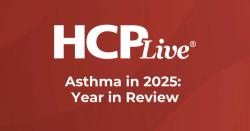
OR WAIT null SECS
High Rates of Sleep Apnea for Pediatric Cystic Fibrosis Patients
Investigators also found a high prevalence between OSAS, nasal polyps, nutritional status, and other clinical variables.
This article was originally published in NeurologyLive.
Pediatric patients with cystic fibrosis (CF) and preserved lung function or mild impairment are at an increased risk of obstructive sleep apnea syndrome (OSAS), according to a new systematic review and meta-analysis of sleep disorders in children and adolescents.
Sleep-disordered breathing was highlighted as an area to be evaluated during clinical visits prior to lung function decline, as OSAS were found regardless of patients’ age and presence of function impairment.
Investigators included a total of 7 studies in the systematic review and 6 studies in meta-analyses of prevalence, following identification of 2318 studies in total. Studies were published between 2011-2020, performed in pediatric hospitals and CF reference centers around the world, including 1 each in the US, Spain, and Australia, and 4 in Brazil.
Patients were predominantly male, with a mean forced expiratory volume in 1 second (FEV1) value between 60.7% and 109.8%.
Sample size in the 7 studies ranged from 9 to 67 participants, most were cross-sectional, and OSAS was most commonly defined as having an apnea-hypopnea index (AHI) of more than 1 event per hour. According to polysomnography data, mean AHI ranged from 1.1-7.3 events per sleep hour.
Investigators found prevalence of OSAS ranged from 32.3% to 100% across studies.
“Neither the relationship between sleep disorders and disease severity nor the impact of sleep apnea and treatment for CF patients is clear,” study coauthor Fernanda Maria Vendrusculo, PhD, MSc, postdoctoral researcher, laboratory of pediatric physical activity, Centro Infant, Pontifícia Universidade Católica do Rio Grande Do Sol, Brazil, said. “There does not seem to be a direct cause/effect phenomenon, and the heterogeneous nature of studies makes it even more difficult to identify the main mechanisms.
“The definition of OSAS in pediatrics is quite controversial; although the American Academy of Sleep Medicine recommends an obstructive apnea and hypopnea index of ≥1 per hour of sleep, relevant pediatric studies use a cutoff point of AHI >2 per hour,” she added. “Furthermore, some authors apply the adult criteria to studies including subjects under 12 years of age (AHI >5 per hour).”
In the meta-analyses, pooled prevalence of OSAS was 65% (95% CI, 0.54-0.76) for AHI over 1 per hour of sleep, with acceptable heterogeneity (I2 = 53.4%).
Considering AHI events at greater than 2 per hour, pooled prevalence of OSAS was 51.5% (95% CI, 0.18-0.84), with high heterogeneity at (I2 = 89.4%).
The main limitation of the study was the potential inclusion of patients with severe lung impairment, despite investigators only including studies where the mean FEV1 value was greater than 60% of predicted values.
Different methodological criteria in pediatric OSAS studies were also utilized, making it difficult to include more data in the meta-analyses.
Most studies were also conducted in Brazil, limiting generalizability, and there is a possibility that patients may have been referred to sleep studies due to the presence of symptoms.
Investigators also found a high prevalence between OSAS, nasal polyps, nutritional status, and other clinical variables, but due to few additional studies, the association was difficult to explain.
“Further studies are still needed to investigate an association between OSAS and airway changes in children and adolescents with CF. In the present systematic review, upper airway dysfunction was mentioned in 4 of the articles; however, they described different dysfunctions and forms of evaluation, which makes it difficult to establish a potential causal relationship between the occurrence of OSAS and upper airway changes,” Vendrusculo said. “As a result, the main hypothesis to explain the high prevalence of OSAS in children with CF (namely its association with upper airway obstruction caused by chronic rhinosinusitis and nasal polyps frequently found in this population) remains uncertain.”


